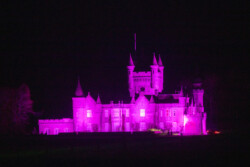VSA has stood next to the people of Aberdeen for over 150 years offering care, support, and vital services to vulnerable people living in our communities as and when they needed it.
As times have changed, so has the way we have delivered our services, but always with one ambition; to give the people of Aberdeen and beyond the best of care to enable them to live the best of lives.
10th March - Alexander Nicol - Aberdeen Lord Provost - called a public meeting to form the Association with regards to the condition of the poor time rule and regulations
In 1870, Queen Victoria accepted the position of Patron of the Association
In 1874 the Flower Mission became the Association’s first co-ordinated volunteer drive, formed to bring beauty and scent of fresh flowers to people who were ill, isolated in hospitals or their own homes
Formation of Prisons’ Aid Society: focused on the rehabilitation of prisoners and provision of support

The Denburn Channel, which was described as “the greatest nuisance in the City” meant the Association took an active interest in living conditions of the City's citizens and helped those unable to work because of illness
The women of the Association’s Flower Mission set about creating a Library for the City’s hospital patients. They helped create a Library of over 400 books in Aberdeen Royal Infirmary. Tuesday was flower delivery day at the hospital and the volunteers used the opportunity to return and swap books as part of their delivery service.
The Association established an employment programme for people who were blind and partially sighted. They learnt a trade by touch and created nets, mats and baskets for everything from fishing lines to fruit trees, church mats to tennis nets
Fresh Air Fortnight was formed by Reverend Alexander Webster, an influencial figure in the Association's history, giving children from areas of poverty a chance to have a holiday in the Aberdeenshire countryside
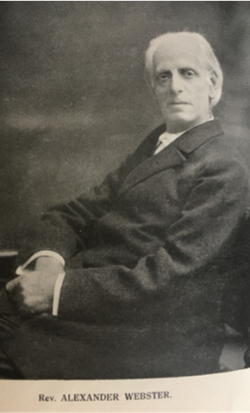
The Association made the purchase of 15, 17, 19 & 21 Princes Street. These were used to house both a nursery and workshops. Workshops offered the unemployed paid jobs in either timber or steel
The Association took over the running of the Female Domestic Service Benevolent Fund, meaning support was given to those who had fallen ill whilst in domestic service
The Bairns, Boot & Clothing Fund was established by the Association who even employed their own shoemaker in the winter periods to repair shoes and boots, as this made more economic sense than continually buying new pairs
The Annual Report sadly listed an obituary for William Sangster, a much-valued Chairman of the Association who gave his life to helping others at the same time as building a business that could support his ambitions and his family, as well as his philanthropy
The Lady Provost’s Willing Shilling Fund was established in 1929 and with the Asssociation helped to entertain 8000 children at Christmas parties and deliver 3000 grocery parcels for the elderly containing 1 lb tea; 4 lbs sugar and a sultana cake weighing 1½ lbs.
A series of 6 beautiful and heartrending sonnets were written – Our Aged Poor ; The Secretary; The Unemployables; The Sick Man’s Friend; The Deserted Wives and The Down and Outs. It was noted that they were written to highlight some aspects of the Association and the people they served.
The Great Depression saw the Association facing more extreme need than ever. There were between 12,000 and 14,000 unemployed men and women in the City. A lot of the support was focused on helping people to travel to job interviews, set up businesses and buy clothes and boots so they were properly and safely equipped to work.

In 1936, Mr H. W. Graham, Chairman of the Association received a letter from Lord Wigram, intimating that King Edward was pleased to grant his patronage to the Association. His Majesty was the 4th Monarch to do so, after his grandmother Queen Victoria, his grandfather King Edward VII and his father King George V.

A local busker who lost his prized violin, when the tent in which he lived was destroyed by a fire, was suitably happy to be gifted a new fiddle by the Association
3 stowaways from Hull supported by the Association at Aberdeen Children’s Shelter, after being discovered on board the trawler Cassio which landed at Aberdeen
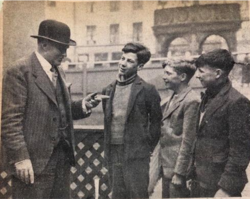
Mrs Bentinck, notable as the daughter-in-law of Baron Bentinck, had a chance encounter with two "ill-clad" boys. This resulted in the Association supporting an annual programme of seaonsal giving for several hundred children who were living in poverty
Former Director of the Association and Lady Provost Lady Lewis, sadly passed away. She was also first female Director of Aberdeen Royal Infirmary as well as mother to 7 children and had roles with 5 other charities in the city
An old lady fell on hard times in 1938 after illness, resulting in she couldn’t meet her basic needs; the Association came to her aid with a £3 grant. 3 years later she returned to the Charity’s offices with £3 which it took her a full 3 years to save; that lady epitomises the spirit of the Charity, recognising there would be someone in greater need than herself
With the advent of WW2, the Charity had to respond to a range of differing needs. These included; homelessness, rehoused evacuees, supporting widows whose husbands had been lost in enemy action and refugees from occupied countries

The Aberdeen Old People’s Welfare Council introduced Scottish Country Dancing to all its clubs for the elderly. It was ahead of its time in recognising that movement and socialisation were good for people at any age
The “Children of Northern Rhodesia”, Scots who had relocated there as missionaries, prospectors and farmers sent money to the “Children of Aberdeen” who had been bombed out and it was spent on a show at Her Majesty’s Theatre for over 300 children
An anonymous war widow brought the top tier of her wedding cake to the Children’s Shelter to be enjoyed by all at the Christmas Party; she no longer needed it for the purpose she had saved it for, the christening of her first-born. Heart warming to think of others in the face of her own sorrow and adversity
It was recognised supporting a community meant dealing with more than just poverty. With high levels of divorce, unemployment and problems with housing, VSA appointed it's first trained social worker, applying professional principles to working with those in need and understanding the importance of doing so, benefited all involved

James Farquharson who had led the Association from 1921-1946 died. “Friend of the Poor & Needy” he was known for his sympathy, humour, grace and providing an “oasis in the desert” for those most in need
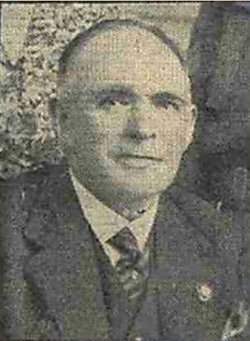
VSA was part of a movement to introduce Marriage Guidance Counselling. The post war era saw a huge increase in divorce rates; this offered support and advice with a view to reconciliation before relationships were irreparable

The Poor Law and poorhouses were abolished and the National Assistance came into being. The plan was to convert old mansion houses into small homes. 30 residents could be supported and safely housed in one place so there was a community that could develop and support each other
Her Majesty The Queen, who took a personal interest in social care, met with 200 guests at the Broomhill Old Folks’ Club. Here she made her impromptu speech telling the company how much she enjoyed meeting them and seeing everyone so happy together
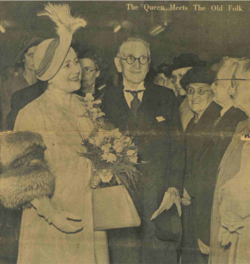
The Association was there to support families who needed extra help with children. They also provided respite care for children whose mothers were in hospital or too unwell to look after them. A wise point was made that poorer children may not get everything they need but “they get love and that’s the main thing.”
The Association provided the Family Holidays Scheme which enabled people to have a holiday, for many it was their first ever holiday, had seen the countryside or been to a farm. For some it restored health to continue earning a wage to support their family

The charity sent 100 older people on trips or holidays out of the City, for many of them it was their first experience outside of Aberdeen in many years. These were not standard mass day trips; the older people selected where they would like to go; one couple were able to visit their daughter’s grave which they had never been to.
The charity was offered space at the Gallowgate Lads’ Club to provide a social club for over 60s for both “lads” and “lasses”. On offer were companionship, tea, draughts, cards, dominoes and handicrafts as well as the chance to join the committee to lead on things the club could provide to improve connections and socialisation for the elderly
Reverend Dr George F McLeod represented Aberdeen at the British National Social Work Conference in Harrogate. He made the case that communities, social workers and congregations must work together to help families stay together in difficult times. A “total community approach” was needed. Still holds true today!
The Association's Annual Report made clear it was moving forward with the creation of a permanent Mental Health Association with a campaign to offer a dedicated mental health service to the people of Aberdeen. Mr A. S. Anderson, Chairman of the Board of Directors was quoted “That there is a need for such a body cannot be questioned.”
44 babies were born at the Richmondhill House and over the course of its first ten years, Richmondhill housed and cared for 505 girls and saw 476 babies born. Care, support, educational and cultural nourishment were on offer and the chance to plan for new lives. One kind donor realising there wasn't enough reading material generously gifted over 200 books.
The Association ran an active visitor’s group to offer support to older people living alone. Providing food, fuel, Christmas parcels and company let people know they were thought of and part of a local community
Miss Miriam A Leith was a guest speaker at the Aberdeen Social Workers’ Luncheon Club, held at the Palace Restaurant, 162 Union Street. Miriam spoke about “Social Conditions Amongst the Canadian Eskimos” and her experiences of volunteering with the Indian-Eskimo Association at Broughton Island. This was one Luncheon Club we wish the digital age had been around for, so hearing from Miriam could live on forever.
Dr Mary Esslemont was a well-respected GP, working in Aberdeen for over 30 years. She was Vice President of the BMA; Vice President of the United Nations Association and was a keen Soroptimist, becoming the President for Great Britain and Ireland in 1961. Dr Mary died on the 25th of August 1984, aged 93.
We salute you Dr Mary!

On the 6th of November 2021, a celebration of the 150th anniversary was held at Balmoral Castle by kind and gracious permission of Her Royal Highness The Queen, Patron of VSA
